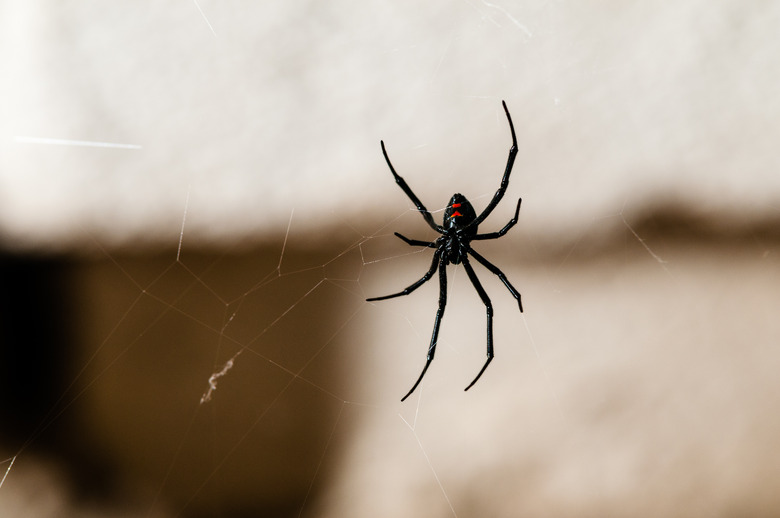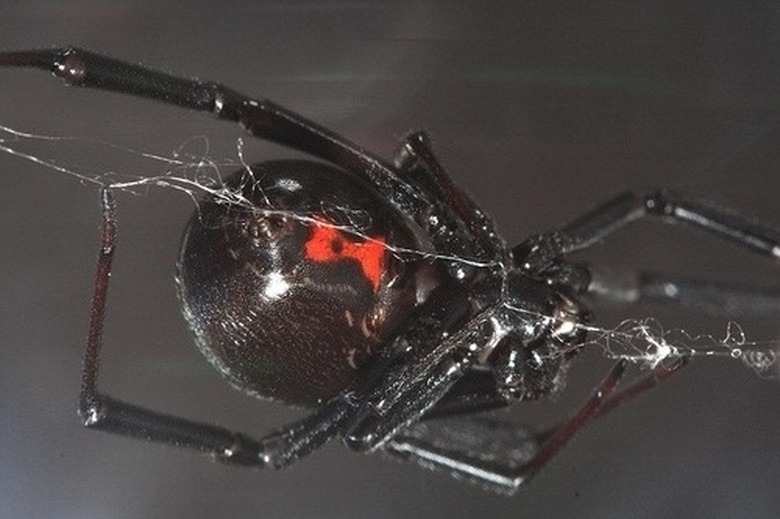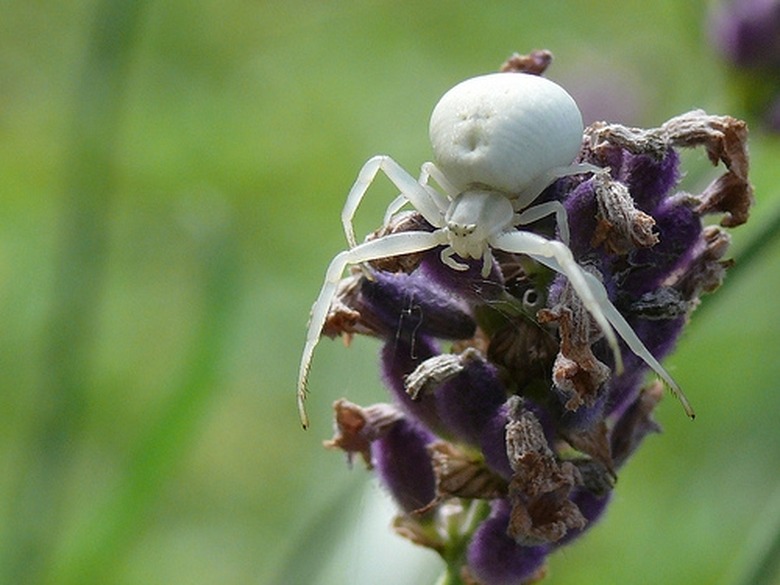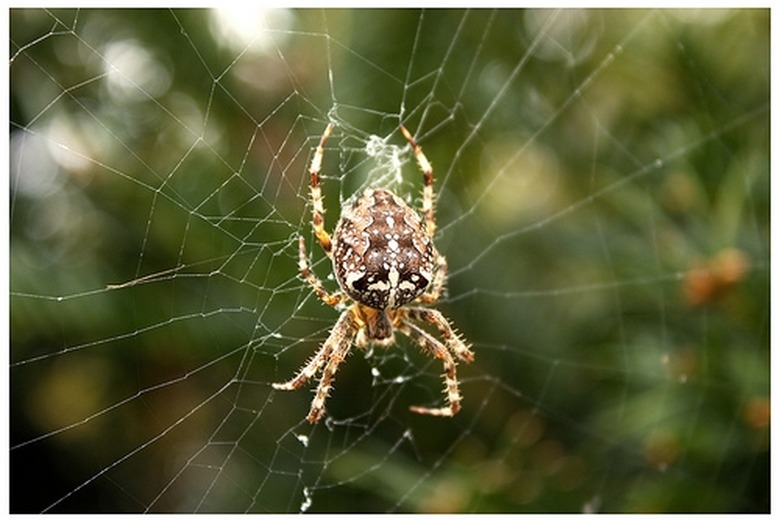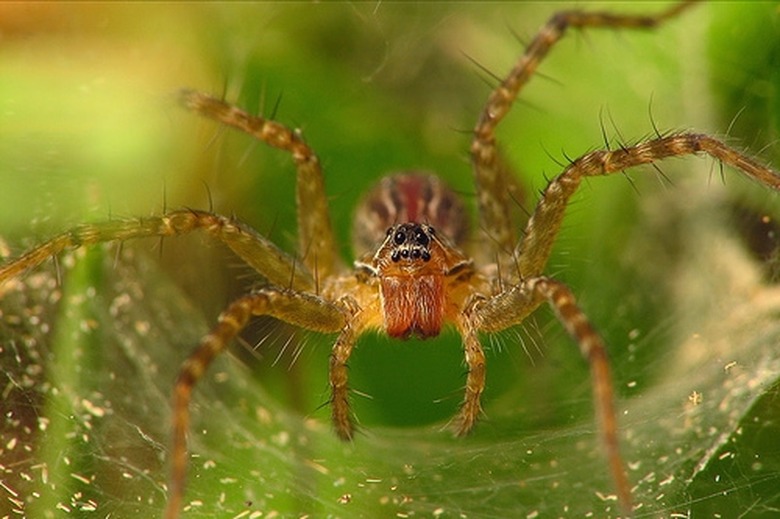Indentification Of Pacific Northwest Spiders
Many different kinds of spiders live throughout the Pacific Northwest — both native and introduced. Where a few species are dangerous, most are relatively harmless and will never bite a human — if they are even physically capable of doing so — unless provoked. Those interested can use a combination of web and body design, and knowledge of their habitats to identify most spiders in the region, though some must be examined under a microscope or by a professional.
Black Widow Spider
Black Widow Spider
One of the few dangerous spiders that can be found in the Pacific Northwest is the black widow. Adult female widows have a black body, 1.2 to 1.6 inches in diameter, and a red marking on their underbelly that usually resembles an hourglass. Male and immature widows have white or yellow stripes and are less venomous than adult females. Males do not develop the full hourglass shape. Black widow webs are fairly shapeless and thin. Widows are found mainly in dry areas like piles of wood, crawl spaces and rock piles.
Hobo Spider
Hobo Spider
The hobo, or funnel-web spider is a common one found in houses of the Pacific Northwest region. While not nearly as venomous as black widows, their bites may cause moderate epidermal damage and flu-like symptoms. They are also quite aggressive. 1.6 to 2 inches in diameter, hobos are a brownish color with a light vertical stripe along their sternum. They live in funnel-shaped webs, usually in dank, dark places, like under rocks. Hobos are very similar in design to some harmless Northwest spider species, with only microscopic differences.
Crab Spider
Crab Spider
Crab spiders are harmless to humans. They are either white or yellow with reddish marks on the side of the abdomen and two extra long pairs of front legs that resemble crab claws. Crab spiders do not spin webs but live inside flowers where they wait to ambush bees and other prey.
European Cross Spider
European Cross Spider
Cross spiders are quite common outdoors throughout the Pacific Northwest. They are brown or orange with white dots on their backs that come together to resemble a cross and can grow to be quite large. Cross spiders often build large, fairly organized webs.
Wolf Spider
Wolf Spider
Wolf spiders are large and hairy ground-dwelling spiders. They are usually dark brown in color. They commonly live in meadows, forests, and shorelines and they do not build webs or nests.
Further Identification
Further Identification
Washington State University provides some Northwest spider identification services. See their website for more information and detailed submission instructions.
References
- The Oregonian: Spiders of Oregon: What's lurking in your home or garden?
- Washington Department of Health: Spiders
- Oregon State University Nursery: Spiders
- Pacific Northwest Insect ManagementHandbook
- Washington State University: How to identify (or misidentify) the hobo spider
- Nature Mapping Program: Cross Spider Facts
- Burke Museum: Myth: Wolf Spiders Live Indoors
Cite This Article
MLA
Miller, Carl. "Indentification Of Pacific Northwest Spiders" sciencing.com, https://www.sciencing.com/indentification-pacific-northwest-spiders-5462439/. 24 April 2018.
APA
Miller, Carl. (2018, April 24). Indentification Of Pacific Northwest Spiders. sciencing.com. Retrieved from https://www.sciencing.com/indentification-pacific-northwest-spiders-5462439/
Chicago
Miller, Carl. Indentification Of Pacific Northwest Spiders last modified March 24, 2022. https://www.sciencing.com/indentification-pacific-northwest-spiders-5462439/
